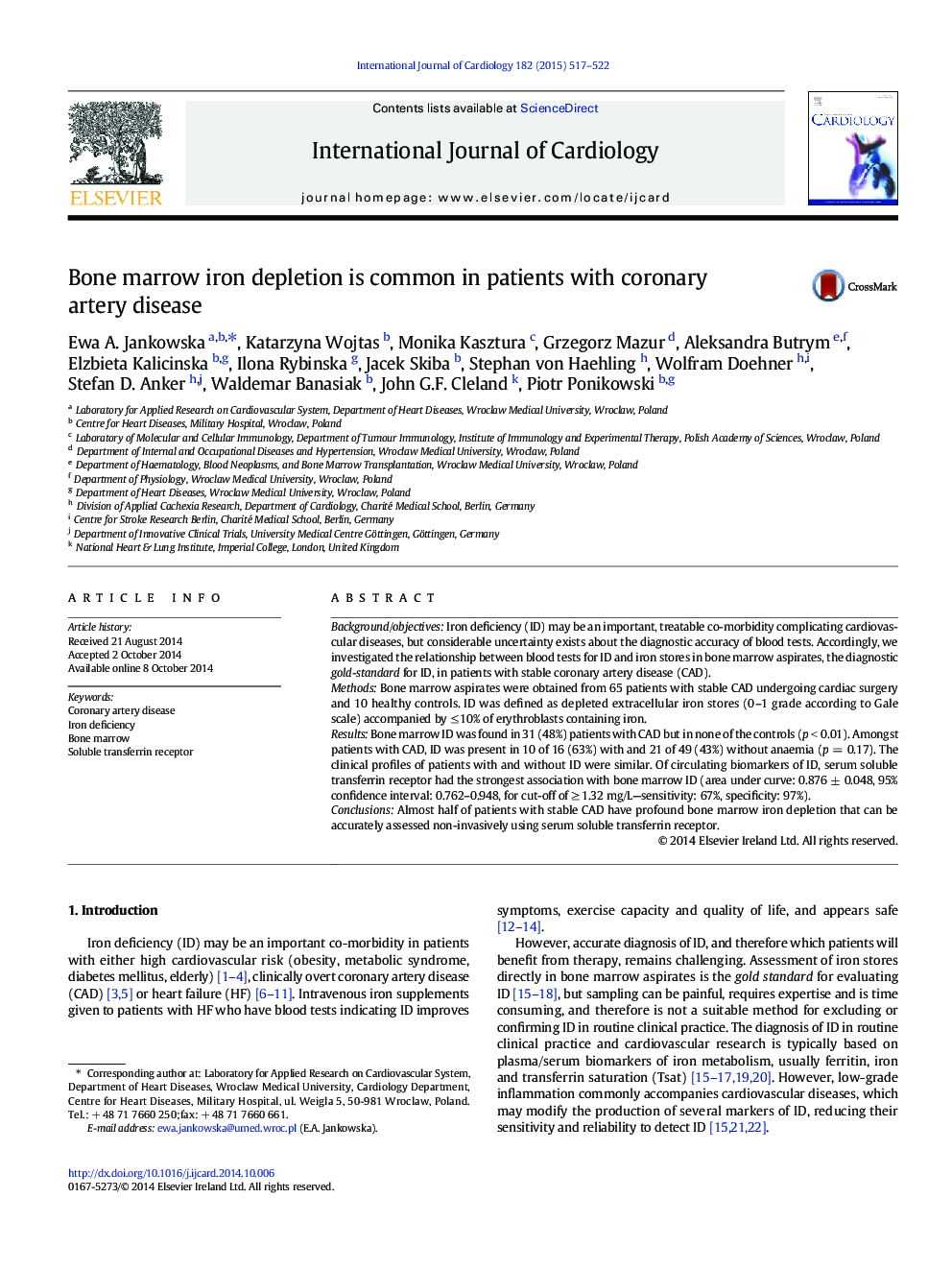| Article ID | Journal | Published Year | Pages | File Type |
|---|---|---|---|---|
| 5967432 | International Journal of Cardiology | 2015 | 6 Pages |
â¢The vast majority of patients with stable coronary artery disease have no stored iron in bone marrow, regardless of concomitant anaemia.â¢Of circulating biomarkers, serum soluble transferrin receptor has the highest accuracy in identifying those with depleted iron stores in bone marrow.
Background/objectivesIron deficiency (ID) may be an important, treatable co-morbidity complicating cardiovascular diseases, but considerable uncertainty exists about the diagnostic accuracy of blood tests. Accordingly, we investigated the relationship between blood tests for ID and iron stores in bone marrow aspirates, the diagnostic gold-standard for ID, in patients with stable coronary artery disease (CAD).MethodsBone marrow aspirates were obtained from 65 patients with stable CAD undergoing cardiac surgery and 10 healthy controls. ID was defined as depleted extracellular iron stores (0-1 grade according to Gale scale) accompanied by â¤Â 10% of erythroblasts containing iron.ResultsBone marrow ID was found in 31 (48%) patients with CAD but in none of the controls (p < 0.01). Amongst patients with CAD, ID was present in 10 of 16 (63%) with and 21 of 49 (43%) without anaemia (p = 0.17). The clinical profiles of patients with and without ID were similar. Of circulating biomarkers of ID, serum soluble transferrin receptor had the strongest association with bone marrow ID (area under curve: 0.876 ± 0.048, 95% confidence interval: 0.762-0.948, for cut-off of â¥Â 1.32 mg/L-sensitivity: 67%, specificity: 97%).ConclusionsAlmost half of patients with stable CAD have profound bone marrow iron depletion that can be accurately assessed non-invasively using serum soluble transferrin receptor.
